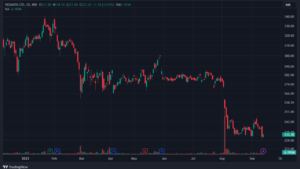Vedanta Resources, the mining giant owned by Anil Agarwal, has proposed a merger of its Zambian copper mine, Konkola Copper Mines (KCM), with its Indian subsidiary, Vedanta Ltd. The move comes after Vedanta regained control of KCM from the Zambian government, which had seized the mine in 2019 over alleged environmental and financial violations.
Key Takeaways
- Vedanta Resources proposes to merge Zambian copper mine with Indian unit.
- Merger aims to create synergies and repay debt of $13 billion.
- “merger would be done at the right valuation and in a phased manner” : Anil Agarwal
Why Vedanta Wants to Merge KCM with Vedanta Ltd
According to Agarwal, who shared his views on X, a social media platform, the merger would create synergies between KCM and Vedanta Ltd’s refining and smelter businesses in the UAE and India. He said that KCM has one of the largest reserves of copper and cobalt in the world, which are important for the energy transition.
Vedanta Ltd. is a leading copper producer in India, with a refining and smelting complex in the state of Gujarat. KCM is a major copper producer in Zambia, with one of the world’s largest copper reserves. The merger would allow Vedanta to integrate its operations in India and Zambia, and to create a more efficient and competitive global copper business.
Agarwal also hinted at his intention to list the businesses of Vedanta separately, saying that investors prefer pure-play companies. He said he had asked his advisers to look into the possibility of having independent management for each business unit.

However, some analysts and investors suspect that the real motive behind the merger is to use Vedanta Ltd’s cash to repay Vedanta Resources’ rising debt. Vedanta Resources has a debt of $13 billion, of which $4.1 billion is due in FY24. The company’s shares have fallen by 27% since January, as investors are worried about its liquidity situation.
How Will Vedanta Execute the Merger
Agarwal said that the merger would be done at the right valuation and in a phased manner over a period of about 18 months, subject to regulatory approvals. He did not disclose any details about the valuation or the deal structure.
Anil Agarwal said “We can create a fully integrated copper vertical and eventually, a successful global copper company, like Chile’s Codelco and Mexico’s Southern Copper. We have other big projects coming up in the copper blocks that we have won in auctions and smelters in international geographies,”
Challenges for Merger
However, some experts believe that the merger could face challenges from minority shareholders of Vedanta Ltd, who may not be happy with the deal terms. They may also question the corporate governance practices of Vedanta Resources, which has been accused of environmental and human rights violations in several countries.
Moreover, the merger could also face legal hurdles from the Zambian government, which owns 20.6% of KCM through its investment arm, ZCCM Investments Holdings Plc. The Zambian government may not agree to sell its stake or may demand a higher price for it.
How will the Merger affects Vedanta’s Copper Business
If the merger goes through, it would create one of the largest integrated copper producers in the world, with operations in India, Zambia, South Africa and Namibia. It would also give Vedanta access to KCM’s high-grade copper and cobalt deposits, which could boost its profitability and growth prospects.
However, the merger would also expose Vedanta to the political and operational risks of operating in Zambia, which is facing an economic crisis and social unrest. Vedanta would also have to deal with the environmental and social issues that have plagued KCM for years.
The merger would also mark a reversal of Vedanta’s earlier strategy of divesting its international assets to focus on its core businesses in India. In 2020, Vedanta sold its stake in Cairn India, an oil and gas company, to raise funds for delisting its Indian unit from the stock market. However, the delisting failed due to low shareholder participation.
Conclusion
Vedanta’s proposal to merge its Zambian copper mine with its Indian unit is a bold move that could transform its copper business and help it repay its debt. However, the merger faces several challenges from regulators, shareholders and stakeholders, who may not approve of the deal or demand better terms. Therefore, it remains to be seen whether Vedanta can pull off this ambitious plan or not.

